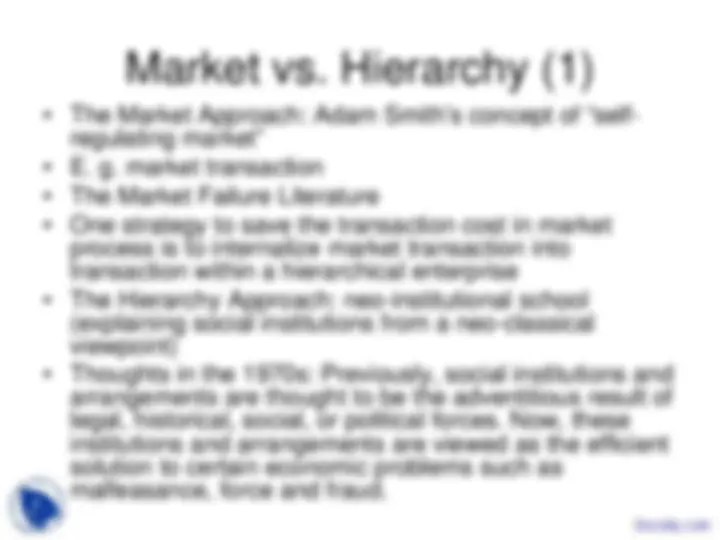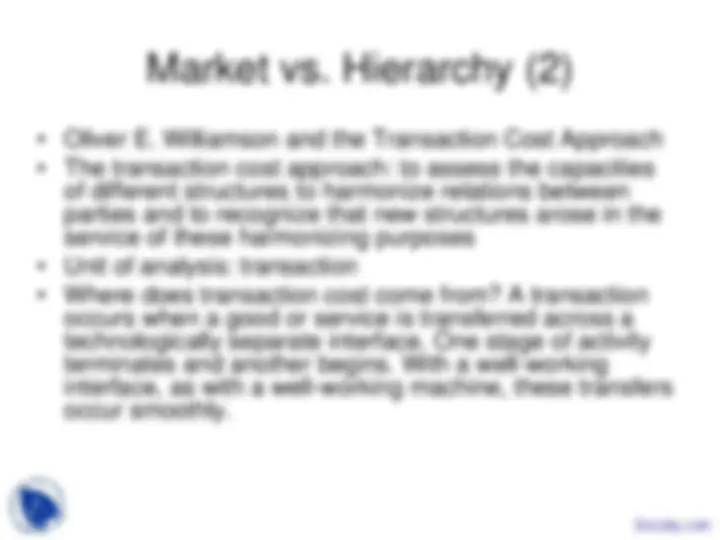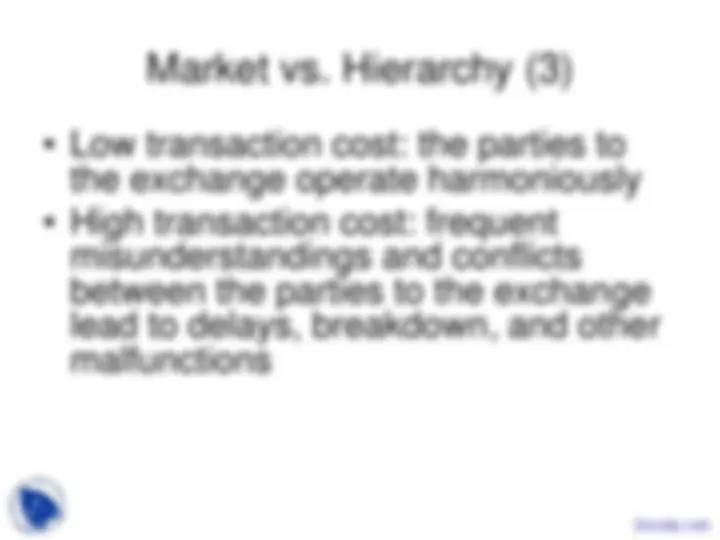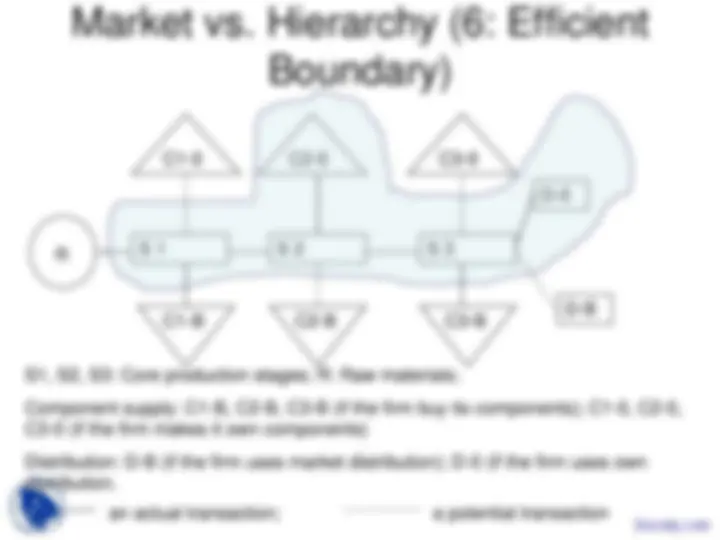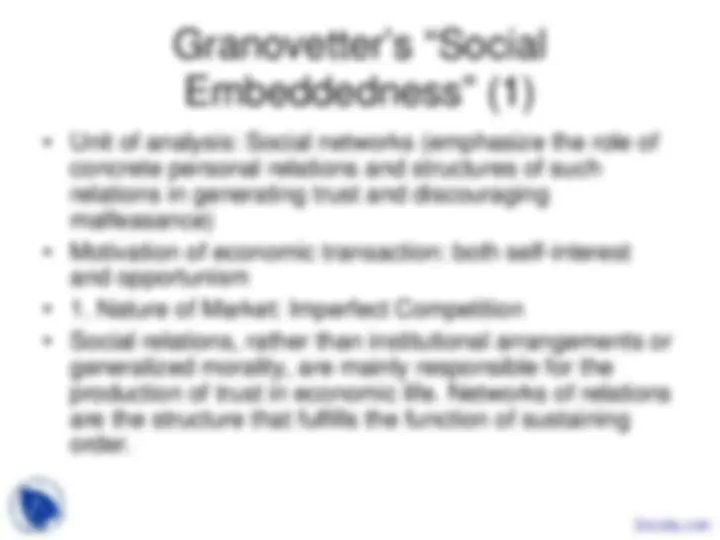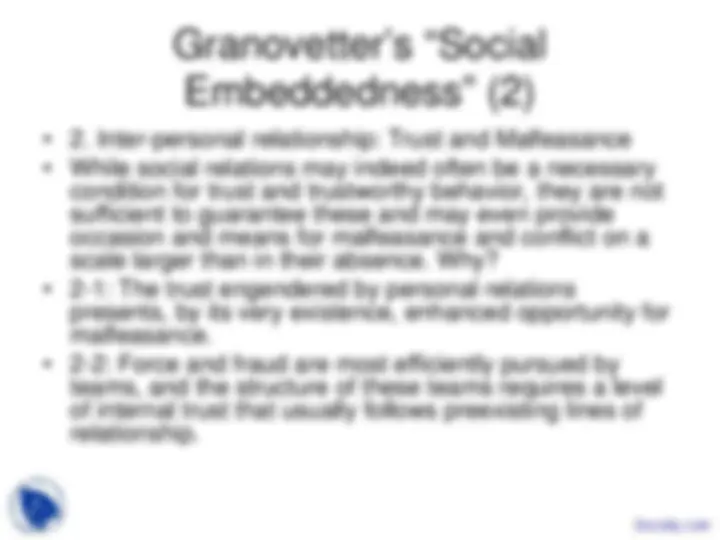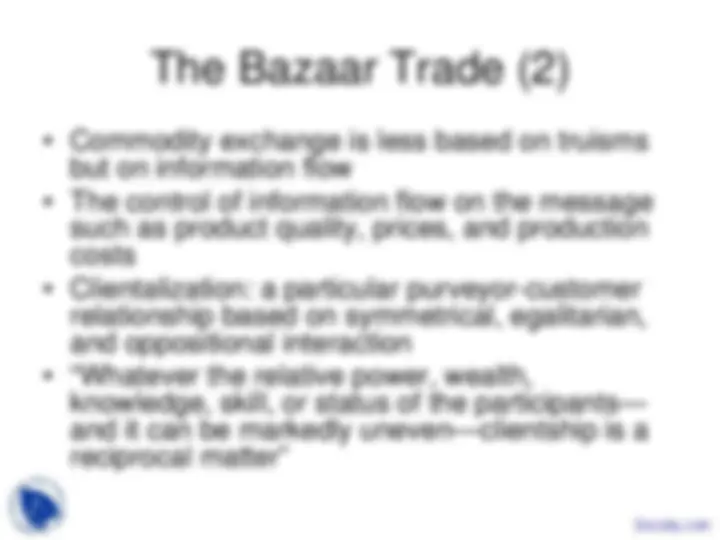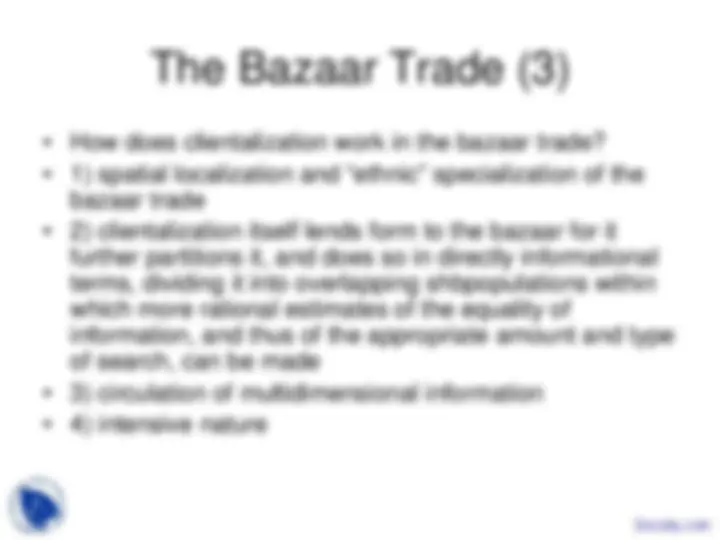Download Embeddedness - Sociology in Economic Life - Lecture Slides and more Slides Economic Sociology in PDF only on Docsity!
Lecture Note 3
“Embeddedness”
From Adam Smith, Karl Polanyi to
Mark Granovetter
- Granovetter on Smith: undersocialized in the discussion of the perfect competition in the self- regulating market
- “The fact that actors may have social relations with one another has been treated, if at all, as frictional drag that impedes competitive markets”
- The level of embeddedness of economic behavior did not vanish in the course of modernization
- Granovetter on Polanyi: oversocialized; emphasize the customs, habits or norms that followed mechanically and automatically in economic process
- The argument on how social influences individual behavior is rather mechanical. But indeed culture is not a once-for-all influence but an ongoing process, continuously constructed and reconstructed during interaction.
Market vs. Hierarchy (2)
- Oliver E. Williamson and the Transaction Cost Approach
- The transaction cost approach: to assess the capacities of different structures to harmonize relations between parties and to recognize that new structures arose in the service of these harmonizing purposes
- Unit of analysis: transaction
- Where does transaction cost come from? A transaction occurs when a good or service is transferred across a technologically separate interface. One stage of activity terminates and another begins. With a well-working interface, as with a well-working machine, these transfers occur smoothly.
Market vs. Hierarchy (3)
- Low transaction cost: the parties to
the exchange operate harmoniously
- High transaction cost: frequent
misunderstandings and conflicts
between the parties to the exchange lead to delays, breakdown, and other
malfunctions
Market vs. Hierarchy (5)
- Transaction across a market interface
- Externalized transaction
- Problem: Opportunism encouraged by “information asymmetries and refers to a lack of candor or honesty in transactions, to include “self- interest seeking with guile:
- e. g. imperfect market competition, limited information, sunk costs, and ”specific human capital” investment - Transaction within Hierarchical firms - Internalized transaction - Problem: Bounded rationality the inability of economic actors to anticipate properly the complex chain of contingencies; they can be handled within the firm’s “governance structure” instead of leading to complex negotiations
Market vs. Hierarchy (6: Efficient
Boundary)
S 1
D-
S 2 S 3
D-B
C1-0 C2-0 C3-
C1-B C2-B C3-B
R
S1, S2, S3: Core production stages; R: Raw materials;
Component supply: C1-B, C2-B, C3-B (if the firm buy its components); C1-0, C2-0, C3-0 (if the firm makes it own components)
Distribution: D-B (if the firm uses market distribution); D-0 (if the firm uses own distribution.
an actual transaction; a potential transaction Docsity.com
Granovetter’s “Social
Embeddedness” (2)
- Inter-personal relationship: Trust and Malfeasance
- While social relations may indeed often be a necessary condition for trust and trustworthy behavior, they are not sufficient to guarantee these and may even provide occasion and means for malfeasance and conflict on a scale larger than in their absence. Why?
- 2-1: The trust engendered by personal relations presents, by its very existence, enhanced opportunity for malfeasance.
- 2-2: Force and fraud are most efficiently pursued by teams, and the structure of these teams requires a level of internal trust that usually follows preexisting lines of relationship.
Granovetter’s “Social
Embeddedness” (3)
- 2-3: The extent of disorder resulting from force and fraud depends very much on how the network of social relations is structured.
- A. The presence of social relations inhibits malfeasance: More extended and large-scale disorder results from coalitions of combatants, impossible without prior relations. … In the business world, where conflicts are relatively tame unless each side can escalate by calling on substantial happens in attempts to implement or forestall takeovers.
- B. Disorder and malfeasance occur when social relations are absent. … But the level of malfeasance available in a truly atomized social situation is fairly low; instances can only be episodic, unconnected, small scale.
Clifford Geertz, the Bizaar Trade
(1)
http://www.nku.edu/~anthro/requirements.html
http://www.wizweb.com/~susan/kyrgyz/pictures.html
http://www.womenforwomen.org/projectindependence/Afghanphotos.htm Docsity.com
The Bazaar Trade (2)
- Commodity exchange is less based on truisms
but on information flow
- The control of information flow on the message
such as product quality, prices, and production
costs
- Clientalization: a particular purveyor-customer
relationship based on symmetrical, egalitarian,
and oppositional interaction
- “Whatever the relative power, wealth,
knowledge, skill, or status of the participants—
and it can be markedly uneven—clientship is a
reciprocal matter”

